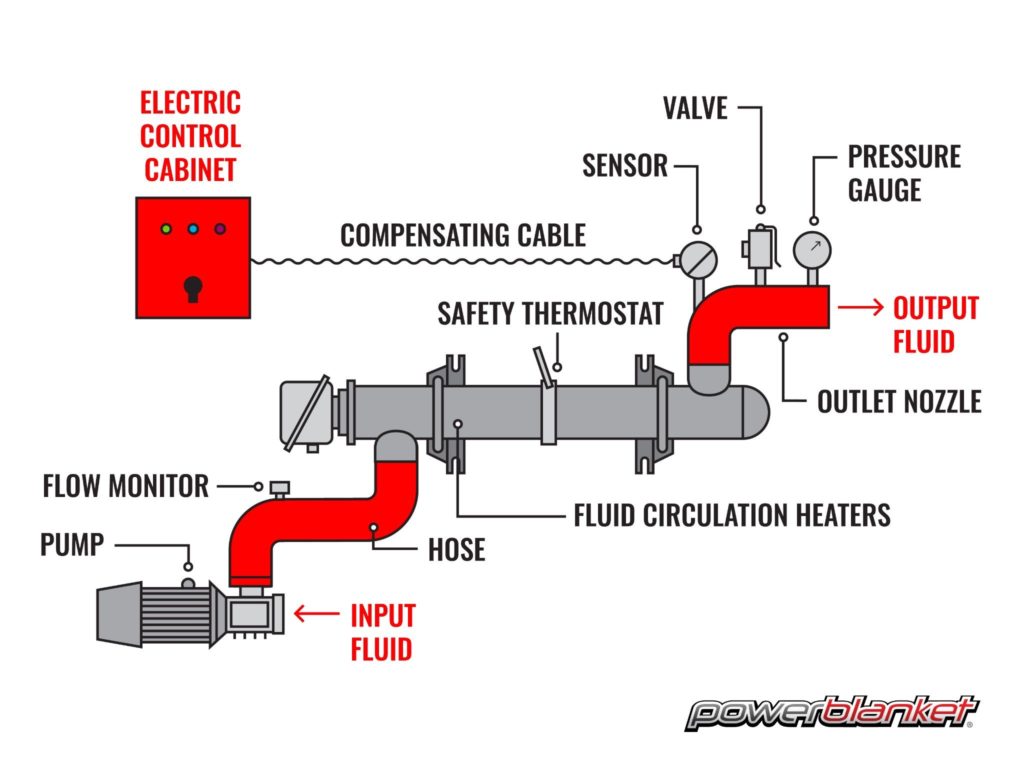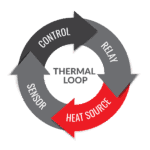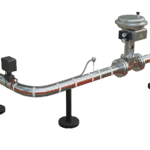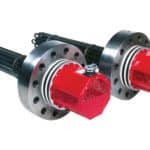Where should I install a temperature sensor?
When it comes to proper temperature sensor placement in circulation heaters, you need to start by understanding what the circulation heater is being used for.
Circulation heaters are designed specifically to heat a flowing product, gas or liquid, and are an essential part of a thermal loop used in process heating systems. Common uses for circulation heaters are for heating natural gas upstream of a gas turbine to dry the gas out before it is burned, heating hot oil going into a heat exchanger, or even heating the contents of a tank in an external loop. Temperature sensors are a key component when a system requiring a circulation heater is designed. Where they are placed in relation to the heater is a critical consideration during the initial design.
There are two types of sensors used when running an electric circulation heater: process sensor or over temperature sensor.
What is a process sensor?
A process sensor can be an RTD or a thermocouple. These sensors serve to provide feedback to the temperature controller by telling that controller what the temperature of the product being heated actually is. This way the temperature controller knows when to ask for more or less power. HVAC units, for example, use process sensors due to the need to know what the temperature of the air is as it leaves the HVAC unit. This tells the HVAC unit if it is putting out the correct amount of heat and allows the unit to adjust accordingly.
What is an over-temperature sensor?
An over-temperature sensor is best used to sense the temperature of a room that relies on electric circulation heaters to generate heat when warming materials. When the room temperature exceeds a set limit, the over-temperature sensor sends a reading to the temperature controller to shut off the circulation heater.
Proper Sensor Placement
The absolute best place for temperature sensors to be placed is right at the pipe outlet as seen in the figure below. Measuring the actual heat moving through the outlet will provide the most accurate temperature reading. This way, process operators can tell if the heater is doing it’s job correctly.

Problems with sensor placement
If that same sensor is moved “down stream” from that point where the product is coming out of the heater, it can cause problems due to inaccurate readings, with thermal lag being the most common issue.
What is thermal lag?
Thermal lag is when materials absorb heat slower than the heat being released by the heat source. For example, products that take a long time to warm up will result in thermal lag, while products that react to heat quickly have little to no lag at all.
Get accurate heating with Powerblanket
Temperature sensors are essential for nearly every industrial use of circulation heaters. Powerblanket understands your heating needs and will help you create a heat plan that incorporates PowerPro circulation heaters into your organization’s process heating system. Talk to Powerblanket’s engineers today.
Frequently Asked Questions
What does a heater sensor do?
A heater sensor detects temperature changes and provides feedback to the temperature controller to ensure efficient operation and prevent overheating in heating systems.
How do I know if my heat sensor is bad?
Signs of a faulty heat sensor include inaccurate temperature readings, equipment not heating or cooling properly, and intermittent sensor failures.
Where is my heater sensor?
In most heating systems, the heater sensor is located near the burner assembly, often appearing as a small rod with a porcelain end.
How do I reset a heat sensor?
A heat sensor typically resets automatically once the temperature falls below a certain threshold, but if it doesn't, it may need to be replaced.
Powerblanket Circulation Heaters are the right choice for your process temperatures and increased efficiency.





